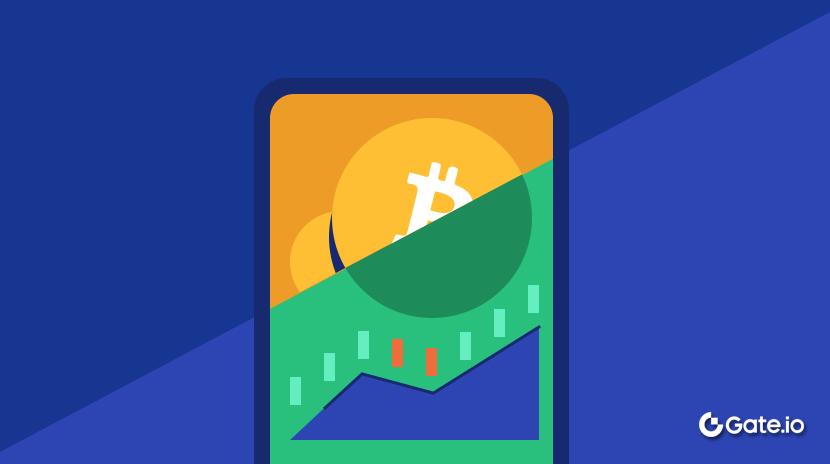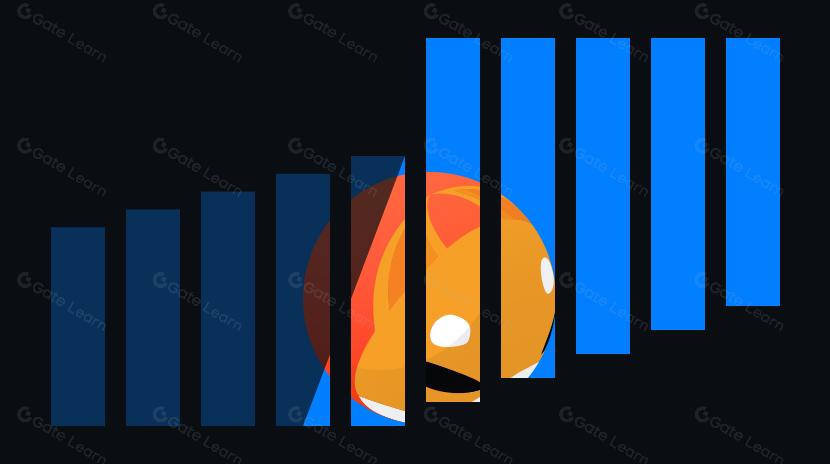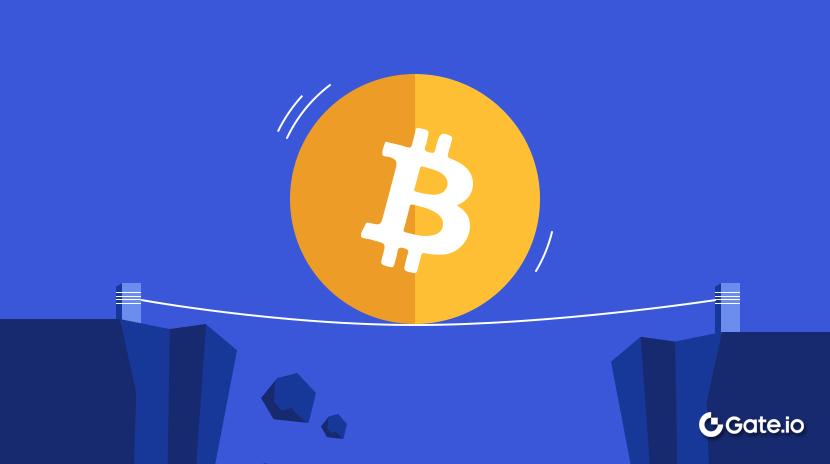Teknik Penangkapan Pasar MEME Dragon Enam: Strategi yang tepat untuk memulai dengan modal kecil, jalan menuju keberhasilan dari 3 juta U menjadi 1 juta U
Untuk modal kecil tumbuh besar, atau untuk masuk ke pasar utama, langkah paling penting adalah mendirikan sistem perdagangan Anda sendiri. Artikel ini menggabungkan pengalaman pribadi untuk menguraikan strategi dan jalur konkret untuk berkembang dari beberapa ratus U hingga melampaui 1 juta U.Pendahuluan:
Hanya melalui komunikasi kita dapat mengidentifikasi titik-titik nyeri yang sebenarnya.
Banyak orang kesulitan dengan gagasan bahwa pertumbuhan modal kecil sangat sulit—hampir sama sulitnya seperti naik ke surga. Tapi itu tidak benar. Untuk modal kecil berkembang, atau untuk masuk ke pasar utama, kuncinya terletak pada membangun sistem perdagangan yang kokoh. (Saya hampir kesal sendiri mengetik klise ini.) Semua orang mengeluarkan prinsip-prinsip besar ini, tetapi sedikit yang menjelaskan bagaimana sebenarnya membangun sistem tersebut atau menjelaskannya secara menyeluruh.
Baiklah, saya akan melakukannya. Saya akan menulisnya. Gaya saya kasar dan tidak disaring - terkadang tajam, terkadang terlalu langsung, menghindari pembicaraan kosong dan berbelit-belit. Tapi itu tidak masalah. Pasar ini membutuhkan seseorang yang menulis hal-hal seperti ini.
Selain itu, artikel ini sangat padat teks, yang mungkin terasa membosankan. Mereka yang mengenal karya saya mengerti bahwa praktikalitas dan wawasan yang dapat dijalankan menjadi prioritas. Jadi, saya percaya bahwa tulisan ini sangat berharga. Jika Anda merasa bingung, ambillah waktu Anda, baca dengan cermat, dan Anda akan mendapatkan sesuatu.
Saya akan berbagi perjalanan dan strategi saya sendiri untuk naik dari beberapa ratus U menjadi lebih dari 1 juta U.
Pengakuan penuh: Saya belum mencapai “A8” (tingkat kekayaan kripto)—saya masih jauh dari para pemain besar. Jadi, saya tidak dapat menulis tentang jalan menuju A8.5 atau A9. Dan karena saya belum menganggap diri saya sangat sukses, saya akan menyimpan “cerita sukses” saya untuk saat saya melewati 5 juta U.
Mari langsung ke intinya. Bagi para pedagang eceran, 'modal kecil' berkisar dari beberapa ratus U hingga 1K–10K U. Untuk artikel ini, kita akan mengasumsikan titik awal 300U. Jadi, ini adalah strategi dunia nyata untuk naik dari 300U menjadi 1M U di pasar MEME utama—semoga dapat menghemat beberapa jalan buntu bagi Anda.
(Catatan: Semua perhitungan data di sini memiliki bias inheren dan hanyalah satu metrik untuk evaluasi.)
1. Organisasi Data (Menggunakan PUMP sebagai Contoh)
Mari kita mulai dengan analisis data.
Pada 15 April, PUMP menghasilkan 43.271 koin MEME. Namun, hanya 408 token "lulus" (telah diluncurkan sepenuhnya).
Tingkat kelulusan hanya 0,94%—kurang dari 1%. Itu berarti 99% token mati di pasar internal.
Berikut data untuk 408 token yang diluncurkan sepenuhnya:

2. Pemahaman Mendalam tentang Strategi
Strategi pada dasarnya dapat dikategorikan berdasarkan dua dimensi kunci: frekuensi perdagangan (tinggi rendah) dan target margin keuntungan (tinggi rendah).
Dengan menggabungkan faktor-faktor ini, kita sampai pada empat model strategis yang berbeda:
Frekuensi tinggi + Margin keuntungan tinggi
Frekuensi tinggi + Margin keuntungan rendah
Frekuensi rendah + Margin keuntungan tinggi
Frekuensi rendah + Margin keuntungan rendah
Selanjutnya, kami akan mengukur strategi-strategi ini secara matematis untuk membandingkan pro dan kontra mereka.
Karena artikel ini berfokus pada strategi modal kecil, kami akan menggunakan 300U sebagai dasar (titik awal saya sendiri). Strategi untuk modal yang lebih besar (10K–200K U, 200K–1M U) akan datang kemudian.
Pada 300U (~2.4 SOL), mari kita bulatkan menjadi 2.5 SOL untuk perhitungan.
Catatan singkat tentang persentase keuntungan: Karena biaya gas dan suap, jika Anda menjual dalam kenaikan 0,1 SOL, setiap perdagangan menghabiskan ~0,005 SOL dalam biaya (pada kecepatan standar). Untuk balik modal, Anda memerlukan perdagangan jual lain, yang menghabiskan 0,005 SOL lagi. Total biaya: 0,01 SOL. Jadi, Anda memerlukan setidaknya keuntungan 10% pada posisi keseluruhan hanya untuk menutupi biaya. Apapun kurang berarti kerugian bersih.
1. Model Perdagangan Frekuensi Tinggi + Margin Keuntungan Tinggi
Untuk memudahkan perhitungan, mari kita abaikan biaya transaksi untuk saat ini. Karena ini melibatkan sejumlah besar perdagangan dan pengejaran keuntungan tinggi, mari kita asumsikan Anda memiliki 2.5 SOL dalam satu hari, dengan 0.1 SOL per perdagangan, mengeksekusi 25 perdagangan. Tidak ada operasi stop-loss yang dilakukan, karena tujuannya adalah mengejar multiplier tinggi.
Jika strategi 'double to break even' diterapkan, setelah 25 perdagangan, untuk mengembalikan investasi awal Anda, Anda setidaknya membutuhkan satu hit dengan multiplier tinggi - khususnya, peningkatan 4800% (48x).
Untuk mencapai pengganda seperti itu, satu-satunya jalan yang layak adalah dengan membeli ke dalam “pasar dalam” (di antara 43,271 token) dan menangkap token yang mencapai kapitalisasi pasar melebihi 100K (16 token). Dengan 25 percobaan, probabilitas terhitung untuk menemukan setidaknya satu token seperti itu untuk balik modal adalah 0.92%, artinya probabilitas kehilangan Anda adalah 99.08%.
Tanpa strategi 'double to break even', kenaikan yang diperlukan akan menjadi 2500% (25x).
Berdasarkan kapitalisasi pasar rata-rata (kapitalisasi pasar rata-rata antara 53K–100K adalah 76.5K, jadi pengembalian 25x memerlukan masuk pada 3.06K; namun, kapitalisasi pasar awal PUMP sudah mencapai 3.8K), satu-satunya jalan yang tersisa adalah membeli di pasar dalam dan mendapatkan token yang melebihi 100K. Probabilitas untuk balik modal masih 0.92%. Jika token dengan kapitalisasi pasar 95K juga dimasukkan, probabilitas balik modal berkisar antara 0.92%–2.06%, dengan probabilitas kerugian tetap sekitar 98%.
Ringkasan: Mengapa probabilitas kerugian begitu tinggi? Alasannya sederhana yaitu modal yang tidak mencukupi. Di sini, 'tidak mencukupi' berarti tidak memiliki setidaknya 500 SOL.
Pedagang PVP harian tidak akan memberitahu Anda bahwa mereka memiliki lebih dari 2.000 SOL dalam dana 'mengejar anjing', namun mereka hanya menggunakan 2-10 SOL per perdagangan. Dengan modal yang cukup dan kesabaran, mereka mampu menunggu untuk mendapatkan satu keuntungan besar yang cukup untuk menutupi semua kerugian dan bahkan membuat keuntungan yang substansial. Secara matematis, strategi ini hanya masuk akal untuk ukuran modal yang besar seperti itu.
Untuk modal kecil, kecuali Anda memiliki keberuntungan atau bakat luar biasa—memungkinkan Anda, sebagai pemula, untuk mengidentifikasi dan menyimpan token super pengganda tinggi di antara puluhan ribu hanya dalam beberapa percobaan—Anda akan secara bertahap kehilangan semua dana Anda.
2. Jumlah Perdagangan Tinggi + Mengejar Model Margin Laba Rendah
Pada PUMP, kenaikan token rata-rata sekitar 663%. Jika kita mendefinisikan "margin keuntungan rendah" sebagai mengambil keuntungan pada 15%-100%, maka rentang harga apa pun dapat menampung target keuntungan kami 100%. Skenario ini bercabang menjadi beberapa kasus:
(3.8K–53K) Pasar Dalam: Membeli di sini memerlukan meyakinkan orang lain untuk mengambil posisi Anda. Untuk keluar dengan keuntungan rendah, Anda hanya perlu beberapa puluh persen sebelum menjual.
Ini relatif mudah karena kap pasar dalam yang rendah berarti pesanan beli kecil dapat mendorong harga naik. Sebagai contoh, menggandakan uang Anda di sini mungkin hanya memerlukan tekanan beli sekitar $4.000 (sekitar 40 orang). Ini tidak sulit—setelah membeli, bagikan alamat kontrak (CA) di berbagai grup, terutama grup berkualitas tinggi, idealnya dengan narasi yang menarik untuk memicu keinginan orang lain masuk. Ini adalah strategi yang dapat diukur yang beberapa pedagang ikuti dengan ketat.
(53K–100K) memerlukan tekanan beli yang relatif besar, artinya Anda perlu menarik lebih banyak orang untuk mengambil posisi Anda. Kondisinya cukup menuntut—hanya mempromosikan diri sendiri di dalam grup tidak akan cukup. Anda harus mengandalkan penilaian sendiri untuk membuat pilihan. Namun, karena kita hanya membahas probabilitas matematis di sini dan mengesampingkan faktor berbasis pengalaman, memainkan model ini dalam kisaran ini sangat sulit. Selain itu, seperti yang diketahui semua orang dengan PUMP, jika token tidak diluncurkan dengan sukses, itu baik-baik saja, tetapi begitu dilakukan, mayoritas besar langsung menjual, membuat kisaran ini hampir tidak berharga dalam hal peluang nyata.
(100K–500K) Apa yang biasanya mendorong kenaikan harga dalam kisaran ini?
- Pedagang skala kecil ("kepala kecil"). 2. Otentisitas naratif (bahkan meme ringan atau penyebaran yang layak sudah cukup). Kita tidak bisa hanya mengandalkan tekanan beli dari pedagang kecil atau copy-trading, sehingga kita harus mengandalkan pengalaman dan penilaian sendiri dalam menilai naratif. Sekali lagi, kecuali faktor ini, mari kita lihat data matematis mentah.
Berdasarkan data, kita tahu bahwa di antara 16 token yang melebihi 100K, 50% tidak melebihi 500K, sementara sisanya melebihi 500K dan bahkan melampaui 1M. Data ini sangat meyakinkan—jika kita masuk ke setiap perdagangan dalam kisaran ini, tingkat kemenangan sekitar 43%, dan total keuntungan yang digabungkan berkisar dari 125% hingga 675%. Apakah kesimpulan ini mengejutkan bagi Anda?
(500K–1M) + (>1M) Kedua rentang ini mirip. Untuk mencapai level ini, kondisi-kondisi kenaikan harga adalah: 1. Pedagang besar masuk. 2. Kelompok pump (manipulasi). 3. Narasi Tier-2 atau lebih tinggi.
Sekali lagi, apakah pedagang besar masuk tidak terkendali kecuali Anda adalah "ayah" mereka. Itu menyisakan dua faktor: menilai apakah ada kelompok pompa yang terlibat dan menilai kekuatan dan penyebaran narasi.
Kedua faktor ini sangat bergantung pada pengalaman. Dari sudut pandang matematis murni, jika kita mengabaikan pengalaman dan masuk ke setiap perdagangan, kisaran keuntungan total yang diperkirakan berkisar antara 223% - 1250% atau bahkan lebih tinggi (tanpa batas atas). Alasan fluktuasi yang begitu besar dalam angka ini bergantung pada di mana Anda memilih untuk mengambil keuntungan.
3. Jumlah Perdagangan Rendah + Model Pengejaran Margin Keuntungan Tinggi
Kategori ini terlihat paradoks pada pandangan pertama. Ini menuntut keterampilan dan pengalaman yang luar biasa, di mana faktor-faktor subjektif mendominasi strategi. Bagi pemula ritel, pendekatan ini menawarkan sedikit panduan praktis.

Namun, kata 'terlihat' dicetak tebal dengan alasan tertentu--jika Anda bukan seorang pedagang eceran kap kecil, model ini tidak selalu paradoks. Dengan pengalaman dan keterampilan yang cukup, meluangkan waktu untuk strategi ini dapat layak.
4. Jumlah Perdagangan Rendah + Pengejaran Model Margin Keuntungan Rendah
Kondisinya adalah sebagai berikut: Lebih sedikit perdagangan (dikendalikan hingga 1~3 kali), margin keuntungan rendah, dengan batas atas ditetapkan pada 100% untuk pengambilan keuntungan, dan titik pengambilan keuntungan berkisar dari 25% hingga 100%. Setiap jumlah perdagangan adalah 0,5 SOL.
Dalam model ini, karena alasan kuantitas, 100K adalah ambang batas penting. Kami menggabungkan interval dan menetapkan batas atas untuk interval yang lebih besar dari 100K menjadi 5M.
Setelah memahami kondisi-kondisi ini, kami mulai menghitung hasil yang diharapkan dalam dua interval ini untuk model kami dengan lebih sedikit perdagangan (rata-rata 2 kali, 0,5 SOL setiap kali) + mengejar margin keuntungan rendah (rata-rata mengambil keuntungan pada 62,5%), seperti yang ditunjukkan pada gambar.

Anda mungkin belum menyadarinya, tetapi data ini benar-benar membuka mata. Mengapa? Karena dalam interval 100K-5M, probabilitas memicu keuntungan benar-benar mencapai 99,67%. Anda mungkin tidak merasakannya secara kuat, tetapi dengan kata lain, secara matematis, probabilitas kegagalan Anda dalam interval ini hanya 0,33%.
Benar—lebih sedikit perdagangan + mengejar model margin keuntungan rendah adalah solusi optimal di antara semua strategi.
Ringkasan: Ketika memulai dengan modal kecil, tanpa memperhitungkan pengaruh pengalaman dan kemampuan, empat skenario berikut berlaku. Data pada gambar di bawah ini lebih realistis dan komprehensif.

3. Memahami Perdagangan Dengan Cerdas—Akun Psikologis
Semua yang disebutkan sejauh ini belum pernah menyentuh faktor pola pikir, yang sangat memengaruhi perdagangan. Mengapa begitu? Biar saya jelaskan.
Pada awal tahap ini, sebagai pedagang eceran modal kecil yang memasuki pasar ini, selain menyiapkan akun modal Anda, saya memperkenalkan akun lain di sini—akun psikologis. Ini sangat penting. Karena ini adalah akun, mari kita bahas pro dan kontra dari peningkatan dan penurunan di akun psikologis.
- Kekurangan Siklus Jahat Penurunan di Rekening Psikologis
Banyak orang masuk ke pasar ini, melihat cerita-cerita keajaiban kekayaan, dan mulai melakukan trading secara acak dan mengejar tren seperti cerita-cerita itu, selalu memimpikan untuk menangkap keuntungan 10X atau 100X berikutnya. Mereka terus melompat ke dalam perdagangan, terus menerus mengalami kerugian, dan selalu akhirnya memotong posisi mereka. Dalam proses ini, akun psikologis mereka tidak pernah berkembang; ia terus terkuras, meninggalkan mereka dengan semakin sedikit keberanian, semakin meragukan diri dan kurang percaya diri.
Ketika Anda gagal banyak kali berturut-turut, bagaimana Anda masih berani memasang taruhan untuk memenangkan yang berikutnya?
Terpengaruh oleh hal ini, Anda secara kebiasaan percaya bahwa untuk menumbuhkan modal kecil, Anda harus mengejar koin dengan multiple tinggi yang sangat dari awal, meremehkan peluang yang relatif berspekulasi dengan lebih pasti. Anda terus mengejar koin meme tanpa pernah berhenti untuk benar-benar memikirkan strategi apa yang benar-benar cocok untuk Anda, tidak pernah dengan jelas mengkuantifikasi strategi spesifik apa yang wajar dan dapat dijalankan.
Kamu tidak tahu hal lain, hanya satu hal: rasio pembayaran adalah segalanya. Tanpa pernah merenungkan dengan tenang sistem tradingmu sendiri, akhirnya kamu jatuh ke dalam spiral kematian tak terbatas dan keluar dari pasar dengan diam.
Kondisi ini tragis. Bayangkan suatu hari, setelah menderita berbagai kesulitan, akhirnya Anda berdiri di hadapan naga. Anda tampak menyadari bahwa jika Anda mengayunkan pedang Anda, Anda akan naik menjadi besar. Tetapi pedang Anda sudah lapuk, dan Anda sudah kehabisan keberanian dan dorongan awal. Bahkan jika Anda mengayunkan pedang Anda, Anda tidak dapat memutuskan kepala bangga sang naga—atau mungkin Anda bahkan tidak memiliki keberanian untuk mengayunkannya.
Saat Anda membaca ini, saya harap Anda berhenti sejenak, melihat kembali analisis saya, dan memikirkannya dengan serius. Pahami dengan seksama strategi khusus apa yang harus Anda ambil.
- Manfaat dari Siklus Mulia Kenaikan di Akun Psikologis
Ini tidak perlu diragukan lagi. Anda mendapatkan kepercayaan diri, menjadi lebih yakin, dan berhenti menginternalisasi stres. Mood harian Anda meningkat secara signifikan, membuat lebih mudah untuk tetap tenang dan berpikir jernih. Saat dihadapkan pada peluang besar, Anda dapat lebih mudah mengenalinya dan berani mengambil tindakan. Ada banyak manfaat lain, yang tidak akan saya jelaskan lebih lanjut.
4. Pelaksanaan Rinci dari Strategi Tertentu
Jadi, bagaimana sebenarnya Anda harus melaksanakan ini? Di sini, saya akan menjelaskannya secara detail untuk Anda.
Strategi Khusus untuk 350–200K
Pertama-tama, bagi secara ketat modal 2,5 SOL Anda menjadi dua kategori. Yang pertama adalah rekening perdagangan, di mana Anda mengalokasikan 1,5 SOL.
Setiap perdagangan harus dibatasi hingga 10% dari rekening perdagangan ini, yaitu 0.15 SOL.
Pada awalnya, sebaiknya fokus pada perdagangan koin MEME yang sudah membentuk dasar. Misalnya, yang baru-baru ini seperti RFC, DARK, dll. Ikuti pergerakan harga dan perdagangan dalam gelombang. Peluang tidak akan sering muncul setiap hari, jadi bersabarlah. Jika tidak, kemungkinan stop-loss akan tinggi. Tunggu titik masuk yang tepat, dan setelah Anda mendapatkan beberapa puluh poin keuntungan, ambillah. Kontrollah dorongan Anda secara ketat—jangan mengejar keuntungan berlebihan.
Dengan melakukannya secara konsisten, Anda akan secara perlahan mengumpulkan pengalaman dan memperluas akun psikologis Anda.
1 SOL yang tersisa masuk ke rekening cadangan. Hindari sering menyentuh rekening ini. Tujuannya adalah untuk melatih pertimbangan Anda untuk peluang besar berprobabilitas tinggi.
Apa yang memenuhi syarat sebagai peluang skala besar berprobabilitas tinggi? Ini tidak muncul sering. Berikut beberapa contoh klasik:
Ketika Binance tiba-tiba mengumumkan penambahan ACT pada bulan November, harga melonjak 25x dalam satu siang. Munculnya tren kecerdasan buatan, di mana token-token terkemuka melonjak secara massal pada hari yang sama. Hari di mana Trump tiba-tiba meluncurkan tokennya sendiri.
Setiap kali kesempatan seperti itu muncul, buatlah penilaian Anda dan investasikan 30% dari rekening cadangan ini.
Jika Anda berhasil memprediksi dan memanfaatkan tiga peristiwa seperti itu secara berurutan, Anda akan memiliki kemampuan awal untuk mengidentifikasinya. Mulai dari saat itu, ketika situasi serupa muncul, Anda dapat memilih untuk melakukan all-in dengan akun ini dan terus menggandakan keuntungan Anda.
Jalankan strategi ini dengan gigih, dan modal Anda akan berkembang dari 300U hingga 200KU.
Strategi untuk Strategi dari 200K hingga 1M
Setelah mencapai A7 (kekayaan bersih ratusan ribu), Anda akan mengalami rasa pencapaian yang luar biasa. Tarik $ 50K — santai saja, manjakan sedikit, dan puaskan beberapa keinginan materi. Pola pikir Anda akan meningkat secara signifikan — percayalah. Anda tidak akan lagi terganggu oleh hal-hal sepele dalam hidup. Perbaikan ini akan sangat memperkuat modal psikologis Anda.
Pada tahap A7, modal psikologis Anda kuat, dan pengalaman Anda relatif kaya. Sekarang, saatnya untuk berpikir lebih mendalam dan bertindak lebih sedikit secara impulsif.
Jalur 1: Kurangi frekuensi trading Anda dan fokus lebih pada perdagangan MEME yang sudah mapan. Luangkan waktu setiap hari untuk menganalisis dan mencari peluang. Tetapi ingat—dengan tingkat modal ini, jangan pernah masuk sepenuhnya, jangan pernah masuk sepenuhnya, jangan pernah masuk sepenuhnya! Alokasikan hanya 20% untuk trading. Dengan cara ini, dengan mengayuh 150K, melintasi 1M benar-benar dapat dicapai.
Jalur 2: Terlibat dalam PVP (pemain vs. pemain) dengan berpartisipasi dalam peluncuran token baru. Modal Anda memungkinkan untuk uji coba, dan cadangan psikologis Anda cukup kuat untuk menutupi kerugian melalui beberapa percobaan—atau bahkan mendapatkan keuntungan besar.
Pemikiran Akhir
Lanskap MEME sepertinya telah terbagi menjadi dua era: era sebelum Trump dan era setelah Trump (sekarang).
Mereka yang mengambil keuntungan dari Trump menarik likuiditas besar-besaran, berpesta tanpa henti atau bahkan pensiun. Mereka yang ketinggalan tetap berada di pasar, menggiling setiap hari, sering kali mengalami rintangan dan berjuang untuk mendapatkan keuntungan yang berarti.
Saya tidak terlalu pandai dalam memberikan pidato motivasi yang panjang. Bagi saya, satu kutipan selalu membuat saya tetap semangat:
"Pasar selalu lahir dari keputusasaan."
Izinkan saya berbagi sedikit pengalaman saya sendiri. Pada akhir 2023, di pasar lain, likuiditas telah benar-benar habis. Itu juga merupakan titik terendah bagi saya—penuh ketidakpastian tentang masa depan dan kekecewaan terhadap diri sendiri.
Saya marah. Saya merasa tersinggung. Saya benci diri saya sendiri. Mengapa bukan saya yang menghasilkan uang? Mengapa saya selalu kalah? Mengapa saya tidak bisa mencapai hidup yang saya inginkan? Mengapa saya melewatkan setiap kesempatan?
Tapi apa yang membedakan saya adalah bahwa, tidak peduli seberapa tidak berharapnya, saya tetap berada di pasar. Saya ingin menguji apakah pepatah "Pasar lahir dari keputusasaan" memiliki kebenaran apa pun.
Kemudian, suatu hari, saya menangkap gelombang yang tepat. Saya naik kereta penyelamat yang selalu muncul di pasar paling suram, mengikuti momentum, dan selamat. Saya rasa tidak ada keahlian dalam menangkap kesempatan itu - hanya ketekunan.
Jangan katakan bahwa tidak ada keajaiban di dunia ini—di dalam jurang yang dalam, rahasia ilahi terungkap.
Penolakan:
Artikel ini direproduksi dari [Shanks], hak cipta dimiliki oleh penulis asli [Shanks], jika Anda memiliki keberatan terhadap cetak ulang, silakan hubungi Belajar Gatetim, dan tim akan menanganinya sesegera mungkin sesuai dengan prosedur yang relevan.
Penyangkalan: Pandangan dan opini yang terdapat dalam artikel ini hanya mewakili pandangan pribadi penulis dan tidak merupakan saran investasi apa pun.
Versi bahasa lain dari artikel diterjemahkan oleh tim Gate Learn dan tidak disebutkan dalam Gate, artikel yang diterjemahkan tidak boleh direproduksi, didistribusikan, atau diplagiat.
Artikel Terkait

Apa itu Fartcoin? Semua yang Perlu Anda Ketahui Tentang FARTCOIN

Analisis Teknis adalah apa?

Top 10 Platform Perdagangan Koin Meme

Apa itu Tronscan dan Bagaimana Anda Dapat Menggunakannya pada Tahun 2025?

Top 20 Airdrop Kripto pada 2025
